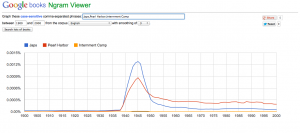When having to choose between The Time Magazine Corpus (http://corpus.byu.edu/time/) or Google Ngram Viewer (http://books.google.com/ngrams) options, it is safe to say that I much rather use Google Ngram Viewer. For one, Time Magazine Corpus isn’t exactly daunting or crazy intricate, but it does take some decoding at first. I don’t particularly like the layout of the Time Magazine Corpus site visually because of the color. It’s far too bland in my opinion and the whole page just looks like some school assignment that I don’t want to do. The graph very much throws me off as well. Overall, Just not my cup of tea.
However, The Google Ngram Viewer page was much better in my opinion. The colors are simple and clean. Nothing is washed out. The graph is visually unappealing like the Time Magazine Corpus is and I don’t feel like I’m doing my homework (even though I still kind of am). What is also nice about the Google Ngram Viewer is for first time users, such as myself, the site even has an example of how to use the graph by demonstrating with three famous names. Overall, I say the Google Ngram Viewer page is well done indeed.
With that said, I obviously decided to use the Google Ngram Viewer page to complete my assignment by using the words: “Japs”, “Pearl Harbor”, and “Internment Camp” between the dates of 1900-2000 and this is what I came up with:
As you can see there is an influx or peak of all three words during around the late 1930s through the early 1950s. Which is appropriate considering those were the rough dates of World War II. When looking back at past charts used by students in the class, I found it interesting that words that seem to be relevant only in the past 50 or 60 years were somehow used a lot even 200 or 100 years ago, However, with the word Japs it really didn’t even originate till the Japanese bombed Pearl Harbor and had developed as an insulting term to anyone who was Japanese. Same with the term Pearl Harbor. The term didn’t really gain any popularity till it actually got bombed. Another interesting element that I would like to point out is the term Internment Camps, which is where the Japanese Americans were sent to who lived along the west coast. The use of the terms seem to be almost non-existent. However, when you look a bit closer you see there was a slight bump during the time the other two terms reached their peak. Even though interment camps were very real. As real as the term Japs or Pearl Harbor, yet it is almost alarming the differences in curve. To me this indicates that the U.S. government must have made an effort to use that term as little as possible as it can lead to a negative connotation towards something the United States were doing…Just saying.

